The Way-Too-Early Top 25 rankings for next season in college basketball have been updated, and now that rosters are beginning to crystallize, it's time to get familiar with each team. Freshmen seem to always play key roles for the nation's top programs, so say hello to the incoming freshman you should know on each top 25 team.

1. Frank Jackson, Duke Blue Devils
The nation's No. 2 class, which includes two of the top three players in the ESPN 100 (No. 1 Harry Giles and No. 3 Jayson Tatum), will make for an exciting year in Durham. The most important Duke freshman, however, will be Frank Jackson (No. 10). After Derryck Thornton transferred, Jackson is Duke's only option at point guard. He can go into any game and thrive because of his skill, basketball IQ and high-level athletic ability. There will be some pressure on Jackson, but he can handle the task of leading Duke into what could be a very special season. -- Paul Biancardi

2. Omari Spellman, Villanova Wildcats
The national champs need a replacement for center Daniel Ochefu, and Spellman (No. 18) will be counted on immediately. He's a skilled post player who can score inside with a variety of moves. He has great hands, touch and footwork that extends to the 3-point line. Spellman also has the strength to rebound on both ends in heavy traffic. Villanova fans can count on Spellman to present matchup problems in the Big East. -- Reggie Rankin
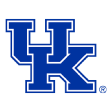
3. Bam Adebayo, Kentucky Wildcats
With the No. 1 class, Kentucky has its usual assortment of five-star prospects, but Adebayo (No. 5) will be leaned on to anchor the frontcourt next season. One of the Wildcats' biggest weaknesses last season was their interior defense, with Skal Labissiere and Marcus Lee unable to consistently hold their own against opposing big men. Adebayo brings strength and rebounding as well as one of the best motors in the 2016 class. De'Aaron Fox (No. 6) and Malik Monk (No. 9) will also likely start immediately, but the losses of both Lee (transfer) and Labissiere (NBA draft) mean Adebayo will be forced to shoulder plenty of responsibility. -- Jeff Borzello
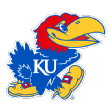
4. Josh Jackson, Kansas Jayhawks
Jackson finished as the No. 2 overall prospect. He's the highest-ranked recruit Bill Self has landed since Andrew Wiggins, and like Wiggins, he'll step in from day one and play a major role. Jackson is an elite athlete, a high-level defender and an outstanding passer on the wing. What truly differentiates him is his mentality; he's a true leader and as relentless and vicious a competitor as there is in the class. -- Adam Finkelstein
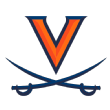
5. Kyle Guy, Virginia Cavaliers
The Cavaliers lost do-it-all senior guard Malcolm Brogdon, but rising senior point guard London Perrantes returns to run the team and could be joined in the backcourt by Guy, the No. 27 player in this class and a McDonald's All American. Guy will need to prepare for the physical play of major college basketball, but he is skilled and more athletic than he appears. The five-star guard can make shots to the arc and distribute the ball. He is smart and competes on both ends of the floor. Guy has all the tools to contribute immediately on and off the ball. -- Rankin

6. Tony Bradley, North Carolina Tar Heels
A throwback-style big man with a wide body and polished low-post arsenal, Bradley (No. 17) is going to hear plenty of Sean May comparisons during his time in Chapel Hill. He'll play immediate minutes for a talented North Carolina squad that could use another weapon up front. Because he might lack the athleticism or physical upside to make as quick of a jump to the NBA as some McDonald's All Americans, the Tar Heels could have a multi-year impact player on their hands. -- Finkelstein

7. Payton Pritchard, Oregon Ducks
Pritchard (No. 54) is a deep-shooting combo guard. With major scoring options returning in Chris Boucher, Jordan Bell and Tyler Dorsey, Pritchard will have plenty of open looks. He is a fierce competitor who has proven to have the shot preparation and confidence needed to make a high percentage of attempts. He navigates in ball screens very well, which increases his versatility in the backcourt. As the No. 1 player in the state of Oregon last year, he was an important pickup for coach Dana Altman. -- Biancardi

8. D'Mitrik Trice, Wisconsin Badgers
Greg Gard and the Badgers signed two players in the class of 2016, Trice and 6-foot-7 wing Aleem Ford, who were fairly unheralded teammates at IMG Academy. Neither will be expected to do much on next season's team, as the Badgers return virtually everyone from last year's squad. Trice, the younger brother of former Michigan State point guard Travis Trice, will have to beat backup point guard Jordan Hill to get on the floor. The 5-foot-11 Trice could become the Badgers' starting point guard once starter Bronson Koenig leaves Madison. He's a floor leader who makes good decisions, creates for others, takes care of the ball and can make shots from midrange. -- Jeff Goodman

9. Quentin Goodin, Xavier Musketeers
Xavier's roster is set for next season, and the Musketeers have a deep backcourt. Goodin will most likely be coming off the bench to fill the void left by Remy Abell, who could defend multiple positions on the perimeter. Offensively, Goodin will fill in nicely at the off-guard or the point guard spot and keep the offense functioning smoothly. He will enhance the backcourt by providing transition play and plenty of guard power to sustain success in the Big East. -- Biancardi

10. Miles Bridges, Michigan State Spartans
The skilled and talented forward became Tom Izzo's first top-10 recruit (No. 8) since the Spartans landed Shannon Brown way back in 2003. Bridges is a 6-foot-7 Flint, Michigan native who chose Michigan State over Kentucky. He is a matchup nightmare because of his ability to score in a variety of ways. He can shoot it from deep, put it on the floor and post up. With the departures of Denzel Valentine, Bryn Forbes, Matt Costello and Deyonta Davis, there's a need for Bridges to come in and make an immediate impact. Don't be surprised if he's "the guy" early on in East Lansing. He's that good. -- Goodman

11. Curtis Jones, Indiana Hoosiers
Jones, a versatile guard who comes in at No. 40 in the ESPN 100, will be a welcome addition to the Hoosier backcourt after the departure of Yogi Ferrell. Jones excels in transition and can make scoring plays for himself. Not only can he play on or off the ball, but he can defend both guard positions as well. -- Rankin

12. Terrance Ferguson, Arizona Wildcats
Ferguson (No. 11) was a late commitment for Sean Miller and his staff, and he will make the Wildcats a potent shooting team as well as help keep their defense sturdy. With Allonzo Trier returning, the backcourt for Arizona will be deep and athletic with terrific positional size and scoring skills. Ferguson played for Miller with USA Basketball, and the two have an understanding and comfort with each other. Most think of Ferguson as a long-distance shooter, but he brings much more than that. He can play different positions on both ends of the floor. Look for plenty of small-ball lineups in Tucson, with Ferguson leading the way. -- Biancardi
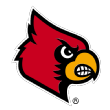
13. V.J. King, Louisville Cardinals
The Cardinals might have only one freshman in their 2016 class, but King is a good one. On the national radar since his early days of high school, King (No. 23) brings a lot to the table. He can score in the midrange or attack the rim, plus he brings solid 6-foot-6 size and length. Louisville has plenty of talented wings in the program, with Donovan Mitchell and Deng Adel leading the way, but King can help the Cardinals at both ends of the floor right away. Because of his size and length, he'll be a factor on the defensive end and in transition. -- Borzello

14. Carsen Edwards, Purdue Boilermakers
Matt Painter and the Boilermakers signed only one player in the class of 2016, but it could wind up being a huge one. Purdue has struggled at the point guard position the past few years, and Edwards is a 6-foot-1 combo guard who is a prolific scorer and shooter. His record at Atascocita High in Humble, Texas, was 138-10, and he scored more than 2,000 points. Edwards was a top-100 (No. 88) player, and he should battle with holdover P.J. Thompson and Michigan grad transfer Spike Albrecht for minutes at the point. The question for Edwards will be if he's up to the task of running a team full-time, considering he has been known more as a scorer. -- Goodman

15. Maciej Bender, West Virginia Mountaineers
Devin Williams' somewhat surprising decision to stay in the NBA draft, coupled with Jonathan Holton's graduation, opens up major minutes along the Mountaineers' front line. Coach Bob Huggins has two freshmen big men coming to Morgantown next season, and of the two, Bender might be more ready to play. He has good size at 6-foot-10, he's highly skilled with range out to the 3-point line, and he has enough versatility to play either the four or five position. He wasn't an ESPN 100 selection, but he has a chance to be one of the bigger freshmen surprises in the Big 12. -- Finkelstein

16. Zach Collins, Gonzaga Bulldogs
Collins played his way into the McDonald's All American Game because of his rare combination of size and shooting. The sharp-shooting big man will stretch the floor for the Bulldogs. With the frontcourt losses of Kyle Wiltjer (graduation) and Domantas Sabonis (NBA draft), Collins will be called on to help fill scoring and rebounding voids. Przemek Karnowski will return for a fifth year, which makes Collins' readiness even more vital. His game complements the returning roster well. -- Biancardi
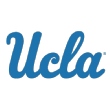
17. Lonzo Ball, UCLA Bruins
The Bruins landed the nation's best true point guard in Ball (No. 4), who could be the best passer in all of college basketball. Ball will take over the point guard position immediately in Westwood, which will allow coach Steve Alford to move rising senior and son Bryce exclusively off the ball. Ball will keep his teammates extremely happy with his unique ability to get everyone involved and in position to score on a consistent basis. -- Rankin
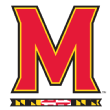
18. Justin Jackson, Maryland Terrapins
Terps coach Mark Turgeon lost four starters from last year's team but returns point guard Melo Trimble and a couple solid frontcourt players. The biggest hole was filled in late May, when Jackson, a 6-foot-7 Canadian wing who was previously committed to UNLV, signed with Maryland. Turgeon needed a long, athletic wing who could score -- and that's exactly what Jackson will provide. Jackson has a combination of size, athleticism and skill that could allow him to be a big-time player. He could get that opportunity immediately in College Park, with the departures of Diamond Stone, Jake Layman, Robert Carter Jr. and Rasheed Sulaimon. -- Goodman

19. Elijah Thomas, Saint Mary's Gaels
Saint Mary's coach Randy Bennett brings in two Pac-12-level perimeter players next season, but he also welcomes back all five starters from a 29-win team. However, while Jordan Ford was more touted coming out of high school, Thomas brings a new dimension to Bennett's roster. Emmett Naar and Joe Rahon are both effective distributors who can knock 3-pointers down from the perimeter, but Thomas is a super athlete on the wing who excels in transition. He can also defend multiple positions and drive to the rim. He should help the Gaels' depth. -- Borzello
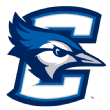
20. Davion Mintz, Creighton Bluejays
Mintz is the lone member of coach Greg McDermott's recruiting class, and he will likely back up Maurice Watson Jr. at point guard. Mintz, a 6-foot-3 guard from North Carolina who has great feel and vision, could battle Syracuse transfer Kaleb Joseph, who is sitting out this season, for the starting spot after Watson graduates. Mintz makes quality decisions and has the necessary athleticism, but the question will be if he can make shots from beyond the arc. Look for Mintz to play sparingly this season and then have a shot to earn extended minutes as a sophomore. -- Goodman
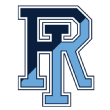
21. Mike Layssard Jr., Rhode Island Rams
For the Rams, the 2016-17 campaign should be everything they expected from the previous season. Four starters return, plus potential NBA draft pick E.C. Matthews is back from injury, and Indiana transfer Stanford Robinson is eligible. Still, coach Dan Hurley could use more production and depth up front, and that's where Layssard comes in. The 6-foot-8 post player had high-major interest coming out of high school but chose the Rams. He brings a developed offensive skill set. He has a big, strong body and can score with his back to the basket or on dump-offs via penetration. Layssard's combination of size and scoring ability is rare for the Atlantic 10. -- Borzello

22. Jarron Cumberland, Cincinnati Bearcats
The ESPN 100 swingman (No. 55) has the size and scoring ability to make an immediate impression. He fits the Bearcats' mentality with physical style yet can also make plays with the ball in his hands. With Kevin Johnson returning for his senior year, it remains to be seen whether Cumberland will crack the starting lineup, but he'll be someone Mick Cronin looks to for offense right away, and he will likely continue to carve out a role for himself throughout the season. -- Finkelstein
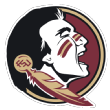
23. Jonathan Isaac, Florida State Seminoles
Isaac (No. 12) should move flawlessly into the starting wing position vacated by Malik Beasley, who declared for the NBA draft after his freshman season. He brings great size and skill at 6-foot-10. Isaac joining forces with Xavier Rathan-Mayes and Dwayne Bacon will make the Seminoles' perimeter tough to match up with in the deep ACC. -- Rankin

24. Alterique Gilbert, Connecticut Huskies
UConn has a long tradition of playing two point guards together, dating all the way back to when coach Kevin Ollie shared the ball with Doron Sheffer more than 20 years ago. Gilbert's arrival will mark the onset of what Husky fans hope will be the next great backcourt tandem, as he'll join Jalen Adams to form an especially potent duo. Gilbert (No. 30) was both a McDonald's All American and a Jordan Brand Classic All-American, and he should provide an offensive boost right away in Storrs. -- Finkelstein

25. Tyus Battle, Syracuse Orange
Coach Jim Boeheim loses his top three scorers from the previous season, including Malachi Richardson after just one year. As a result, the Orange badly need some scoring punch on the perimeter. Colorado State graduate transfer John Gillon should start at the point guard spot, while Franklin Howard is expected to take a step forward, but Battle (No. 35) brings shooting and athleticism that are lacking elsewhere on the roster. He can handle the ball or play on the wing, and he has continued to develop his jump shot. Battle also has good size for the backcourt, which should help Syracuse in its patented 2-3 zone defense. -- Borzello
